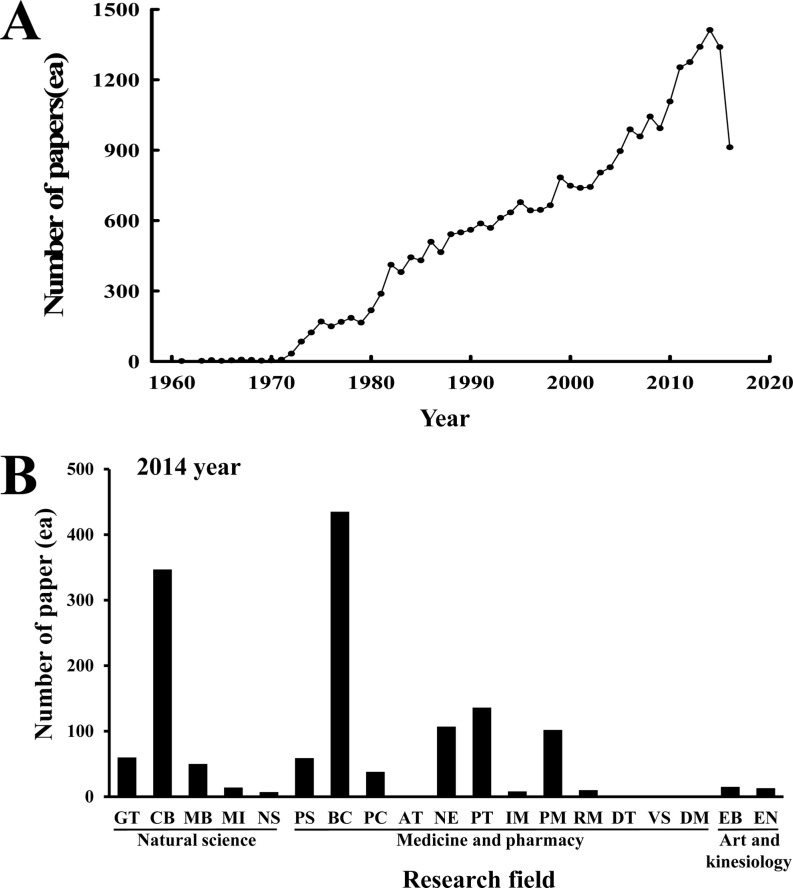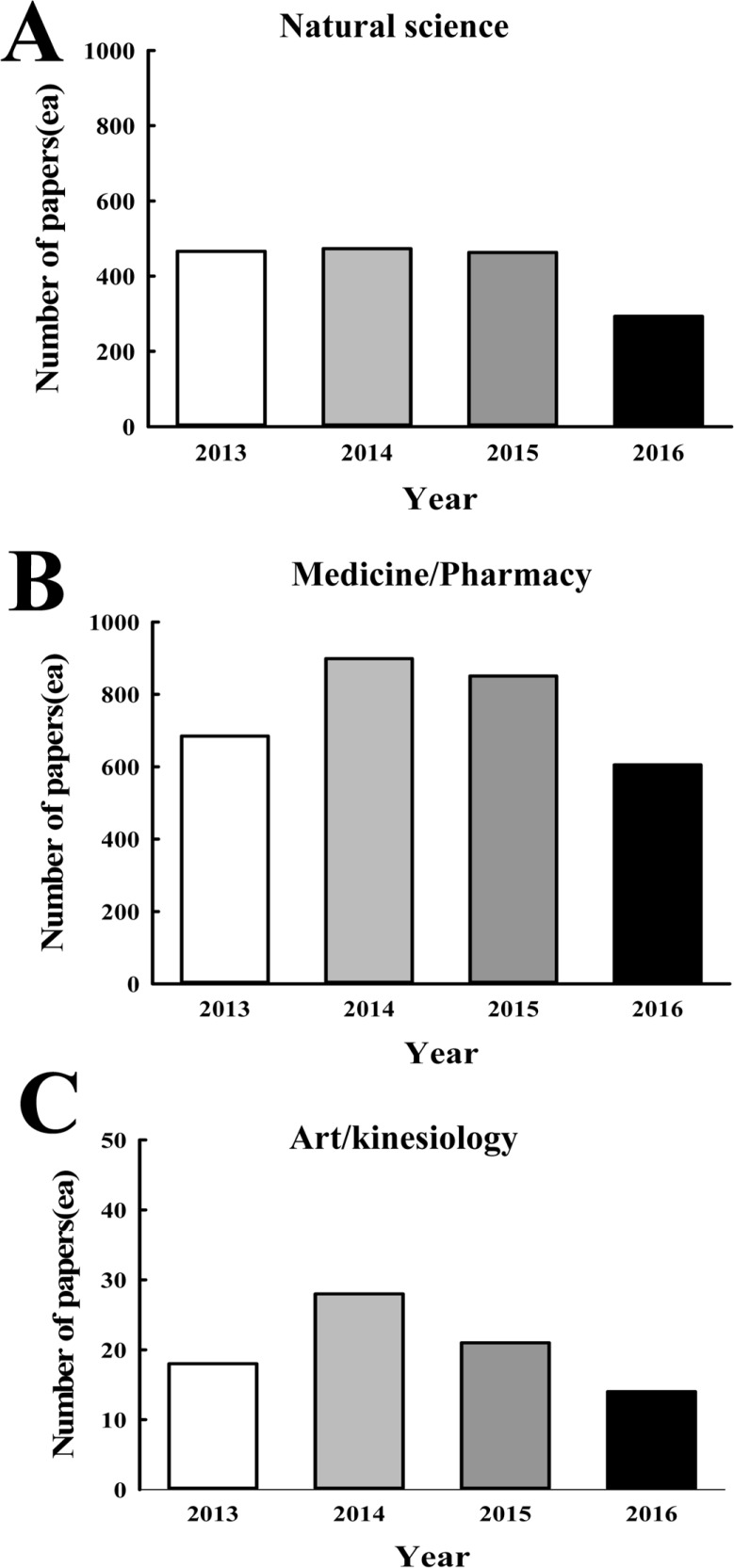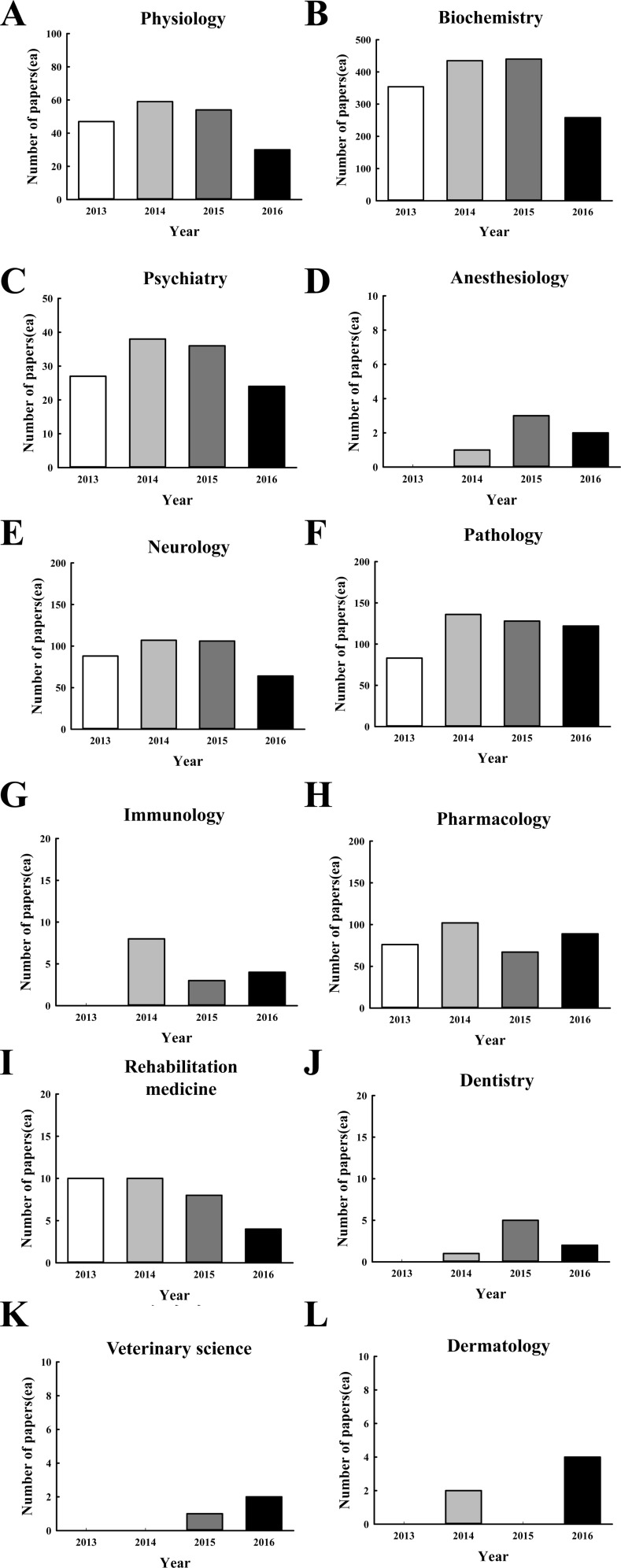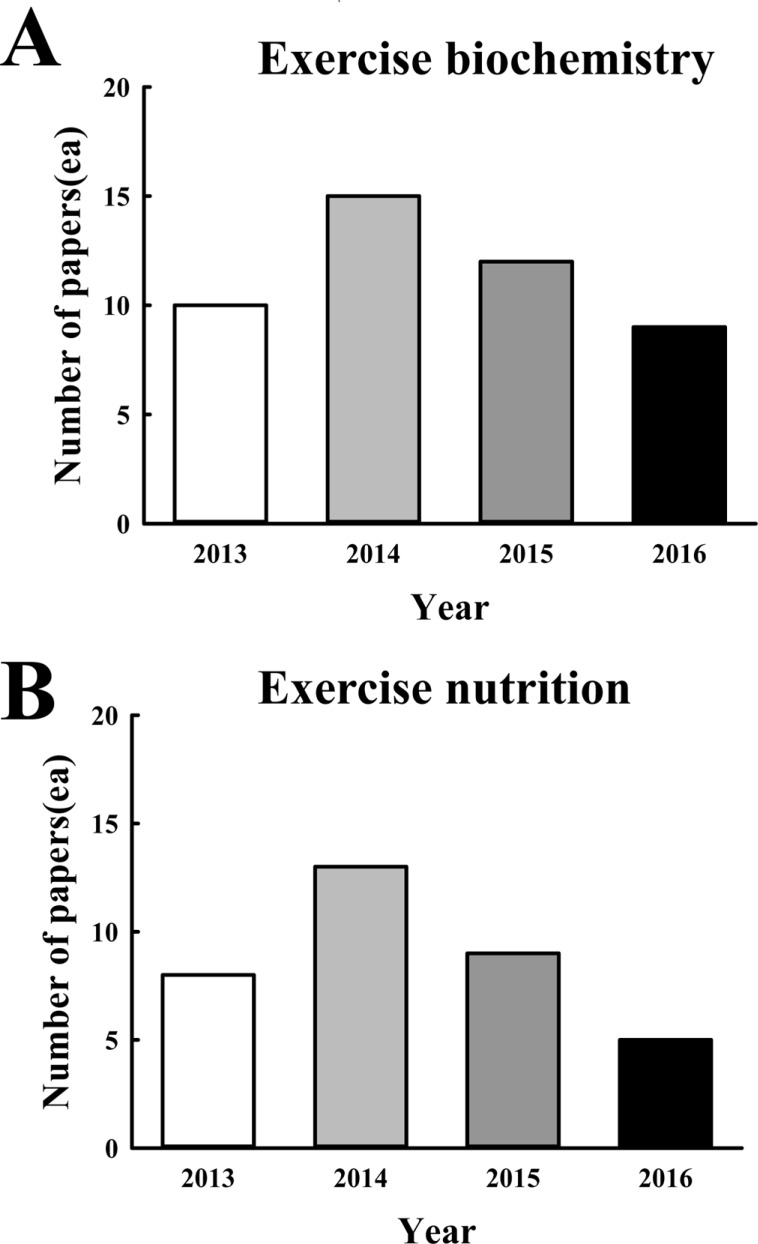Lab Anim Res.
2017 Jun;33(2):171-178. 10.5625/lar.2017.33.2.171.
Annual tendency of research papers used ICR mice as experimental animals in biomedical research fields
- Affiliations
-
- 1Department of Biomaterials Science, College of Natural Resources & Life Science/Life and Industry Convergence Research Institute, Pusan National University, Miryang, Korea. dyhwang@pusan.ac.kr
- 2Department of Sports Health Care Science, Sang Myung University, Seoul, Korea.
- 3Department of Health and Exercise Science, Korea National Sport University, Seoul, Korea.
- 4College of Veterinary Medicine, Kyungpook National University, Daegu, Korea.
- KMID: 2407432
- DOI: http://doi.org/10.5625/lar.2017.33.2.171
Abstract
- Institute of Cancer Research (ICR) mice have been widely used in various research fields including toxicology, oncology, pharmacology, and pharmaceutical product safety testing for decades. However, annual tendency of research papers involving ICR mice in various biomedical fields has not been previously analyzed. In this study, we examined the numbers of papers that used ICR mice as experimental animals in the social science, natural science, engineering, medicine-pharmacy, marine agriculture-fishery, and art-kinesiology fields by analyzing big data. Numbers of ICR mouse-used papers gradually increased from 1961 to 2014, but small decreases were observed in 2015 and 2016. The largest number of ICR-used papers were published in the medicine-pharmacy field, followed by natural science and art-kinesiology fields. There were no ICR mouse-used papers in other fields. Furthermore, ICR mice have been widely employed in cell biology studies within the natural science field as well as in biochemistry and pathology in the medicine-pharmacy field. Few ICR mouse-used papers were published in exercise biochemistry and exercise nutrition in the art-kinesiology field. Regardless in most fields, the total numbers of published papers involving ICR mice were higher in 2014 than in other years, although the numbers in some fields including dentistry, veterinary science, and dermatology were high in 2016. Taken together, the present study shows that various ICR stocks, including Korl:ICR mice, are widely employed as experimental animals in various biomedical research fields.
Keyword
MeSH Terms
Figure
Reference
-
1. Lynch CJ. The so-called Swiss mouse. Lab Anim Care. 1969; 19(2):214–220. PMID: 4240230.2. Rice MC, O'Brien SJ. Genetic variance of laboratory outbred Swiss mice. Nature. 1980; 283(5743):157–161. PMID: 7350540.
Article3. Kim JE, Yun WB, Sung JE, Lee HA, Choi JY, Choi YS, Jung YS, Kim KS, Hwang DY. Characterization the response of Korl:ICR mice to loperamide induced constipation. Lab Anim Res. 2016; 32(4):231–240. PMID: 28053617.
Article4. Song SH, Kim JE, Go J, Koh EK, Sung JE, Lee HA, Choi KM, Kim HD, Jung YS, Kim KS, Hwang DY. Comparison of the response using ICR mice derived from three different sources to ethanol/hydrochloric acid-induced gastric injury. Lab Anim Res. 2016; 32(1):56–64. PMID: 27051443.
Article5. Cui S, Chesson C, Hope R. Genetic variation within and between strains of outbred Swiss mice. Lab Anim. 1993; 27(2):116–123. PMID: 8501892.
Article6. Chia R, Achilli F, Festing MF, Fisher EM. The origins and uses of mouse outbred stocks. Nat Genet. 2005; 37(11):1181–1186. PMID: 16254564.
Article7. Lehoczky JA, Cai WW, Douglas JA, Moran JL, Beier DR, Innis JW. Description and genetic mapping of Polypodia: an X-linked dominant mouse mutant with ectopic caudal limbs and other malformations. Mamm Genome. 2006; 17(9):903–913. PMID: 16964440.
Article8. Brown JA, Chua SC Jr, Liu SM, Andrews MT, Vandenbergh JG. Spontaneous mutation in the db gene results in obesity and diabetes in CD-1 outbred mice. Am J Physiol Regul Integr Comp Physiol. 2000; 278(2):R320–R330. PMID: 10666131.9. Matsuda M. Comparison of the incidence of 5-azacytidine-induced exencephaly between MT/HokIdr and Slc:ICR mice. Teratology. 1990; 41(2):147–154. PMID: 1690922.
Article10. Kehrer JP, DiGiovanni J. Comparison of lung injury induced in 4 strains of mice by butylated hydroxytoluene. Toxicol Lett. 1990; 52(1):55–61. PMID: 2356571.
Article11. Carlson GP. Comparison of mouse strains for susceptibility to styrene-induced hepatotoxicity and pneumotoxicity. J Toxicol Environ Health. 1997; 51(2):177–187. PMID: 9176557.
Article12. Livne E, Laufer D, Blumenfeld I. Comparison of in vitro response to growth hormone by chondrocytes from mandibular condyle cartilage of young and old mice. Calcif Tissue Int. 1997; 61(1):62–67. PMID: 9192516.13. Yalcin B, Nicod J, Bhomra A, Davidson S, Cleak J, Farinelli L, Østerås M, Whitley A, Yuan W, Gan X, Goodson M, Klenerman P, Satpathy A, Mathis D, Benoist C, Adams DJ, Mott R, Flint J. Commercially available outbred mice for genome-wide association studies. PLoS Genet. 2010; 6(9):e1001085. PMID: 20838427.
Article
- Full Text Links
- Actions
-
Cited
- CITED
-
- Close
- Share
- Similar articles
-
- Erratum: Annual tendency of research papers used ICR mice as experimental animals in biomedical research fields
- Comparative analysis of basal locomotor activity-related metabolic phenotypes between C57BL/6 mice and ICR mice substrains derived from three different sources
- Immunogenicity of a Combined Hepatitis A and B Vaccine in ICR Mice
- Infrequent expression of ras in genital neoplasms initiated by 7,12- dimethylbenzanthracene, and promoted by 12-0-term decanoyl phorbol- 13-acetate in ICR mice
- Comparison of commonly used ICR stocks and the characterization of Korl:ICR







